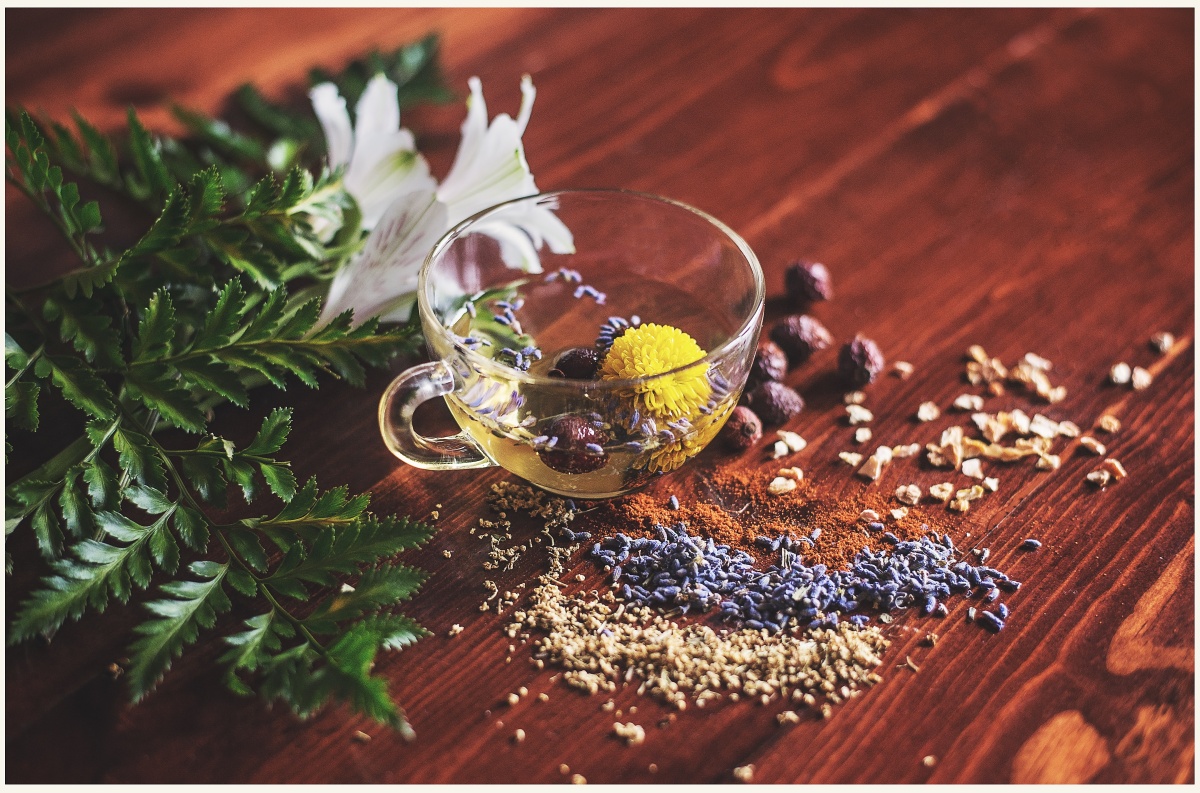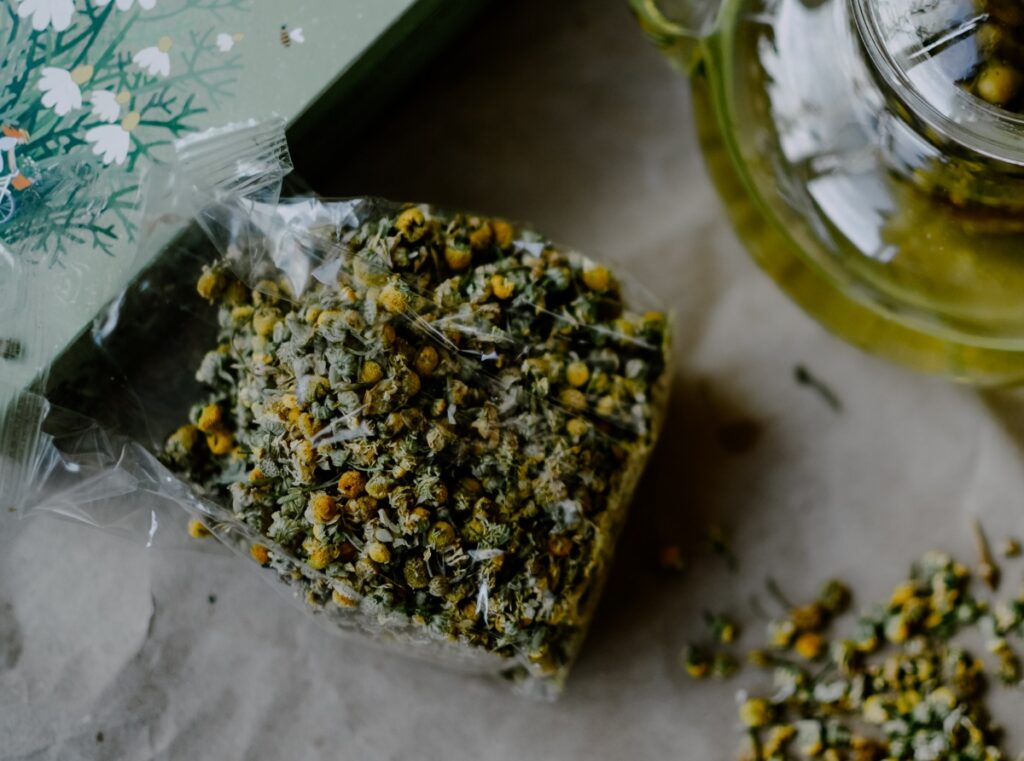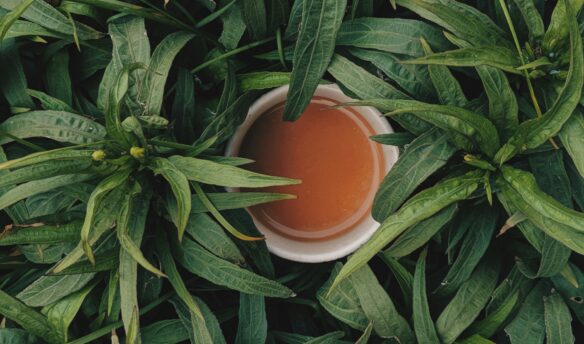Your customers come to your café for a unique experience. Maybe it’s your special house roast. Perhaps it’s the atmosphere or your expansive gluten-free pastry options.
But what if it was your custom tea blends bringing in even more smitten customers?
Most coffee shops offer similar tea options, but there is an art to irresistible custom tea blends. A tea blend unique to your cafe can keep your caffeine-free or tea-enthusiast customers returning for a specific drinking experience they can’t get anywhere else.
There’s also a financial incentive for shop owners: bulk herbs are cheaper than pre-bagged tea. As an herbalist, I profit from selling tea for $1-2 a bag, so a $4-$5 cup markup at a café should yield a great return. Custom herbal tea blends are a great way to distinguish your menu and provide a profitable way to give your customers a unique product they’ve never had before—and here’s how to do it.
How To Formulate Custom Teas
In a balanced tea blend, the herbs will work together in synchronicity. You can drive their harmony by playing off-flavors and “temperatures.” Imagine taking a cucumber and a jalapeno out of the refrigerator and taking a bite. Even though they’re both the same actual temperature, one feels hot in your mouth, and one feels cold, right?
Herbs work the same way, so you can use this to create a warming blend, a neutral blend, or a cooling blend.
From my years of experience, I like to follow the one-of-each method: I use one kind of root, leaf, flower, fruit, and seed. This helps give the tea a well-rounded full-body effect.
First, you’ll pick a flavorful, aromatic base like chamomile, rooibos, fennel seed, or mint and find flavors from the other categories to complement it. These will give you a strong base flavor to work off, and you can target the notes you want to highlight with the other herbs.
Here’s a breakdown of each category:
Roots
Other than being highly nutritious, roots bear a “grounding effect.” Most are pretty neutral in flavor but add a rich depth.
Warm
ginger – umami but zingy
turmeric – lightly spicy and brightly colored
ashwagandha – pretty bitter but easily blends into vanillas, sweet notes, and spices
Neutral
dandelion root – used as a coffee substitute for its bitterness and energizing qualities
licorice root – warming or cooling depending on the blend – robust, so a pinch should do
peony root – earthy but sweet
Cooling
marshmallow root – mild and versatile, adds a little viscosity
burdock root – gentle earthy flavor
With any root, a powder form is best. Otherwise, you will need to simmer it for 20-30 minutes.
Leaves
On a cellular and chemical level, leaves share a lot of resemblances with human blood and cells, which might explain why their effects move to the extremities so effectively—these range from somewhat bland to potently aromatic.
Warm
rosemary – herbaceous but floral, blends well with berries
thyme – herbaceous, particularly compatible with lavender
basil/tulsi – many varieties, all delicious
Neutral
mints – warming or cooling depending on the blend
lemon balm – calming citrus flavor
stinging nettle – best if first extracted hot, then left to steep overnight at room temperature to pronounce its earthy flavor (very versatile)
Cooling
rooibos – vanilla-like and sweet; rooibos is the color of a shiraz, and it’ll turn the tea a red color
eucalyptus – bursting coolness with a refreshing, mint-like kick
Flowers
Most flowers go to the head. Think of that cerebral burst you get when you take a big whiff of a fresh bouquet – that’s what a bold, aromatic flower will do in a tea blend. These are usually the most flavorful and aromatic, so they’ll often be a base for your blend you’ll play the other flavors off.
Warming
lavender – aromatic and heavily floral with a hint of sour
Neutral
chamomile – profoundly flavorful and aromatic
yarrow – subtly sweet and light
calendula – lightly sweet and silky smooth
Cooling
rose – more astringent floral flavor, but with a nutty undertone
hibiscus – astringent and sour, does well in a citrusy iced tea
jasmine – very floral and alluring
Fruits
Many fruits are potent antioxidants, a word everybody loves to hear. Whether your customer is trying to drown their sorrows in a cup of tea or wants a long and healthy life, fruits have it covered, as indicated by their tendency to be astringent, sour, and tart.
Warming
pineapple – gives a depth of flavor without overpowering the blend with sour or tartness
mango – dried mangoes have a beautiful orange color and citrusy sweetness
raisins/currants – sweet and familiar flavor
Neutral
goji berry – tangy and succulent
papaya – the epitome of tropical flavor
fig – sweet and heavenly
Cooling
citrus – lemons, oranges, etc. – usually zest or powdered peel
apple – either the peel or dehydrated bits, complemented in warming blends that counter the tartness
I almost always use dried or powdered fruit, but you can use fresh slices – perhaps even dress up the tea like a snazzy cocktail! Powders tend to be more concentrated and infuse more readily. Dried fruits require longer to extract, and fresh fruits vary in intensity in a tea blend. The juicier the fruit, the stronger its flavor when fresh.
Seeds
Seeds, like roots, are rich in nutrients. In one tiny seed, there is enough nutrition to sustain a newborn plant for the first few days of its life.
Warming
nutmeg – used in pumpkin and apple pie spice, it’s got familiar spunk
black pepper – spicy but common in warming blends like chai
fenugreek – hit or miss with people’s pallets as it’s a little musky, but I do like it with a rooibos base
Neutral
fennel seed – very similar to anise or licorice root but lighter and more aromatic
nettle seed – super nutrient-rich, making it subtly earthy
Cooling
coriander – the seed of cilantro, it’s got a mild citric note without overt cilantro flavor
black walnut – mildly sweet nuttiness I love in rich tea and even coffee
What Else Is There To Know?
For an idea of a complete blend, here’s my recipe for The Tea That Everybody Needs. It is neutral, balanced, and nutritious, plus I’ve never had a complaint!
Two parts chamomile (base) – floral, neutral, and aromatic
One part lemon balm – citrusy, neutral, and aromatic but light
One part fennel seed – sweet but earthy, neutral, and refreshing
Pinch of lemon zest – the sour note brings the cooling in
Pinch of ginger – counters the citrus notes well with the umami and warming kick
To brew, steep it by the bag or in a dedicated press, as coffee will taint the flavor. One “part” is a teaspoon for one bag, but you can also use this recipe to create a bulk batch of tea.
Once you decide on a flavor combination, ordering materials in bulk is easy. Most purveyors sell tea ingredients for a few dollars an ounce. The number of servings you can get per ounce will vary depending on how heavy the herb is, but leaves and flowers are generally cheaper than seeds, fruit, or roots. For example, you can buy a pound of organic chamomile for around $20-$25.
If there are cautions about an herb, most suppliers will forewarn you. I always caution about St. John’s Wort and echinacea, which only experienced herbalists should use. There are others, but they usually aren’t tasty, and a reputable herb supplier will caution you away from troublesome ingredients.
My favorite bulk suppliers are Mountain Rose Herbs (which also sells strainers, presses, dispensers, etc.) and RiseUp Remedies. Sometimes you can even find health food stores that sell loose herbs so you can experiment before committing to a big order.
It can be challenging to distinguish your niche or find new and exciting ways to build customer loyalty in a saturated market. Experimenting with herbal blends and new tea preparations is a creative and low-risk way to refresh your menu and introduce something delicious and enticing that feels entirely fresh to customers. However you go about it, it is so worth it, and your customers will thank you!
Cover photo by Lisa Hobbs on Unsplash [/et_pb_text][/et_pb_column] [/et_pb_row] [/et_pb_section]

















